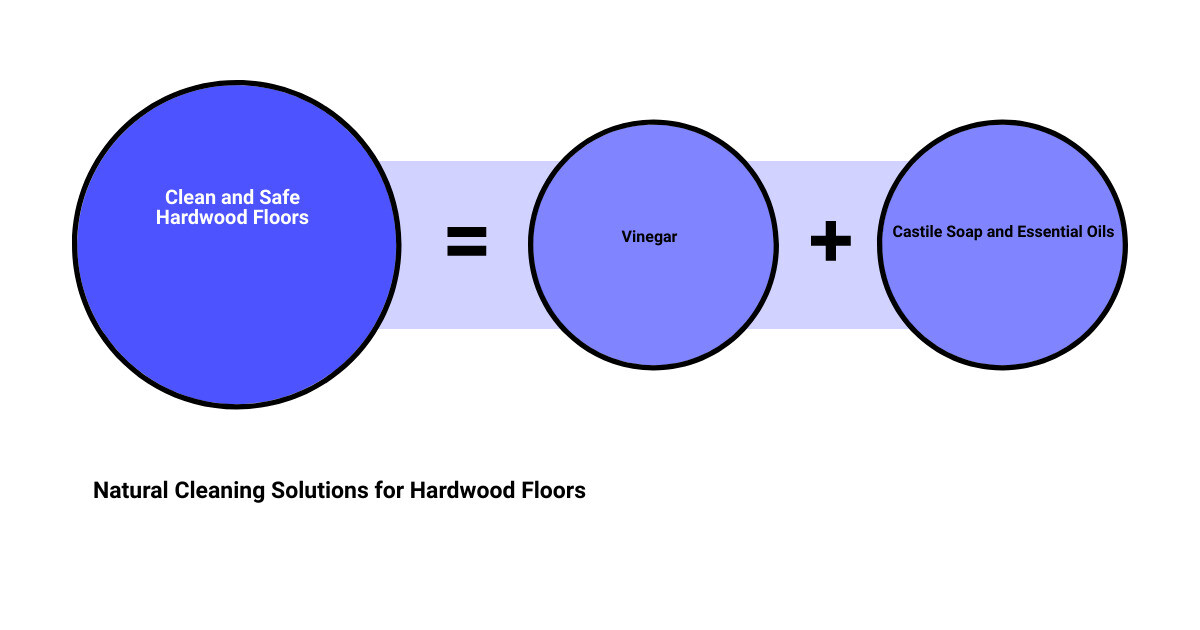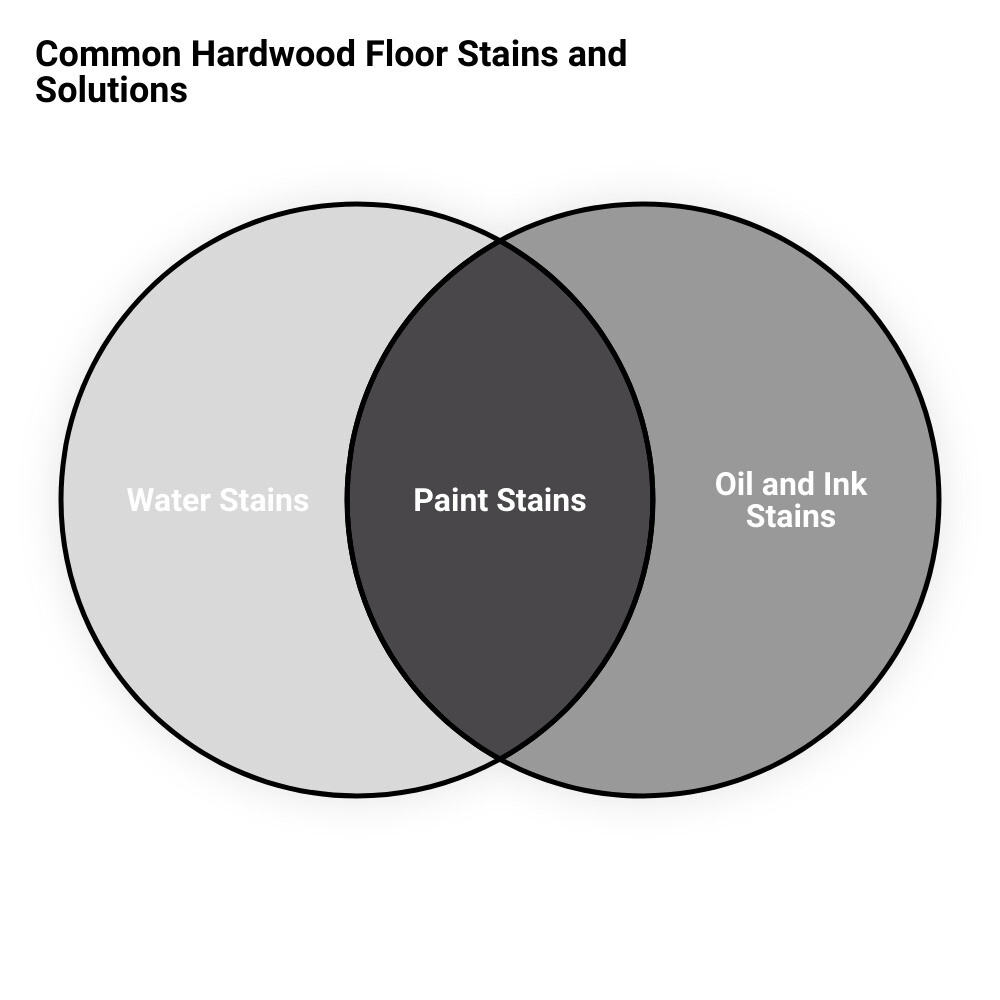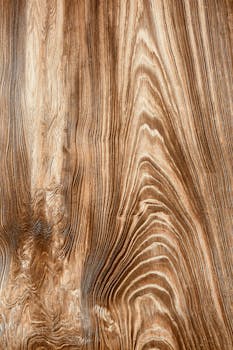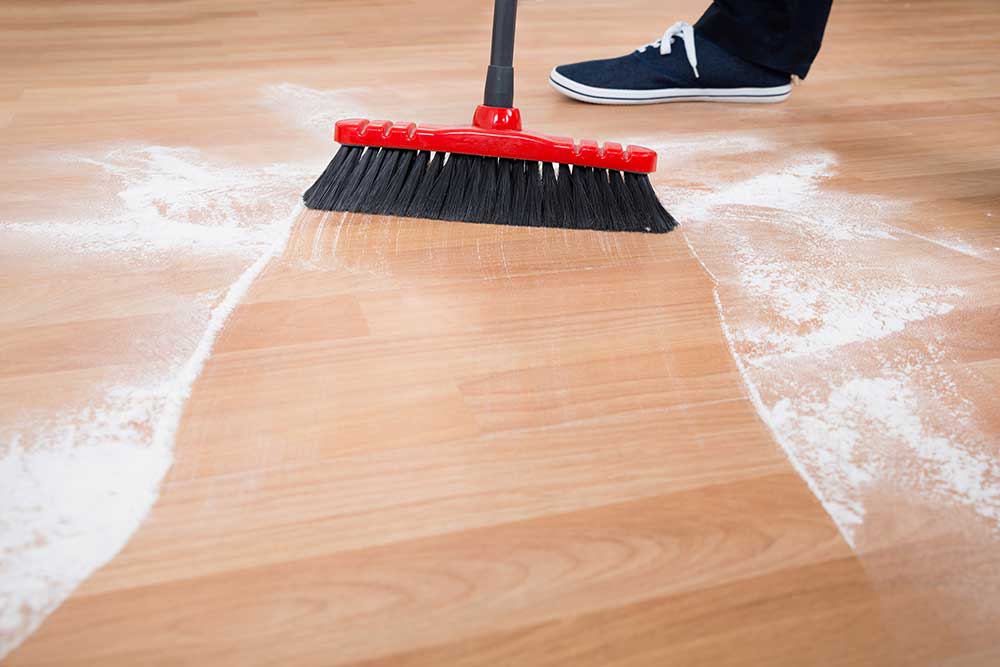Introduction: The Importance of Natural Cleaning for Hardwood Floors
For the busy homeowner in San Diego, your hardwood floors are not just a surface to walk on – they’re a significant investment, adding warmth, character, and value to your home. But like any investment, they need regular care and attention to maintain their luster and longevity. This is where the importance of natural cleaning for hardwood floors comes into play.
Hardwood flooring is more than a beautiful addition to your home; it also contributes to a healthier living environment. Unlike carpeted floors, hardwood doesn’t trap allergens like dust, pollen, and pet dander. However, these allergens can accumulate on the surface and in the crevices of your wood floors. Regular cleaning, especially with natural solutions, can help maintain good indoor air quality by removing these allergens from your floors.
Over time, dust, dirt, and grime can slowly erode the surface of your floors, dulling their shine and reducing their lifespan. This is where the true value of natural cleaning shines. By using gentle, eco-friendly cleaning methods, you can not only preserve the beauty of your hardwood floors but also extend their lifespan.
Whether you’re dealing with everyday dirt and grime or more serious wear and tear, this guide will help you wash your hardwood floors naturally. You’ll learn about the best natural cleaning solutions, how often to clean based on your lifestyle, and even how to handle common hardwood floor stains.
It’s time to preserve the beauty and value of your hardwood floors with natural cleaning. Let’s get started!
Understanding Your Hardwood Floors: Sealed vs. Unsealed
Before we begin our natural cleaning journey, it’s essential to understand your hardwood floors. Hardwood floors are typically categorized into two main types: sealed and unsealed. This distinction plays a significant role in how you should clean and maintain your hardwood floors.
Sealed hardwood floors have a protective coating, often polyurethane, that lends them a glossy finish. This coating acts as a safeguard, keeping water and other substances from penetrating the wood. Therefore, sealed floors are less prone to moisture damage and can tolerate a wider range of cleaning solutions, including vinegar. To ascertain whether your hardwood floor is sealed, conduct a simple water droplet test. Drop a tiny amount of water onto the floor; if the water bead remains on the surface, your floor is sealed.
On the flip side, unsealed hardwood floors lack this protective barrier. These floors usually have a more matte finish and are more susceptible to water damage. In case of the water droplet test, if the water is quickly absorbed, your floor is likely unsealed. For unsealed floors, it’s critical to avoid using large amounts of water or other liquid cleaners, including vinegar, as they can infiltrate the wood and cause damage. Instead, use a slightly damp cloth for cleaning and promptly follow up with a dry cloth to absorb any lingering moisture.
Understanding whether your hardwood floors are sealed or unsealed is not just a trivial detail but a vital foundation for your cleaning routine. It directly impacts the cleaning methods and products you should use, including whether vinegar can be employed. With this understanding, you are one step closer to maintaining the beauty and longevity of your hardwood floors. Stay tuned as we delve deeper into the world of natural cleaning solutions for your hardwood floors!
Regular Maintenance: The Key to Long-Lasting Hardwood Floors
The secret to the longevity of your hardwood floors lies not in occasional deep cleanings, but in the consistent care and regular maintenance you provide. Just like any other valued possession in your home, your hardwood floors need consistent attention to remain in their best condition. This section will guide you on the key steps to include in your regular hardwood floor maintenance routine.
Dusting and Vacuuming: The First Line of Defense
Before you grab a mop or any cleaning solution, the first line of defense in maintaining your hardwood floors is regular dusting and vacuuming. These simple tasks are crucial in removing dust, dirt, and pet hair that can scratch the surface of your hardwood floors and dull their shine over time.
It’s recommended to dust your floors daily using a microfiber mop or cloth, which is designed to trap dust and grime effectively. For a more thorough cleaning, vacuum your floors weekly or biweekly using a vacuum with a floor-brush attachment to avoid scratching the wood’s finish. Avoid vacuum cleaners with beater bar attachments, as these can cause damage.
Using Mats and Removing Shoes: Preventive Measures
Another key to maintaining your hardwood floors is to prevent dirt and grime from reaching them in the first place. One effective way to do this is by placing floor mats both outside and inside your exterior doors. This way, much of the tracked-in dirt will be captured by the mats, saving your floors from unnecessary wear and tear.
Additionally, make a habit of removing shoes when entering the house. This practice not only keeps your floors cleaner but also prevents damage from scratch-causing heels and cleats. In case of rainy or snowy weather, consider setting up a boot removal area to avoid the damaging effects of water and de-icing agents on your floors.
The Role of Lifestyle and Traffic in Cleaning Frequency
The frequency of your hardwood floor cleaning will largely depend on your lifestyle and the amount of traffic your floors receive. A house with several family members, pets, or frequent visitors will naturally require more frequent cleaning than a less occupied home.
A quick daily dusting can significantly reduce the accumulation of dirt and grime, while a deeper clean or scrub should be done once a month. High-traffic areas might require more frequent attention, with a damp mop cleaning recommended twice per month.
Remember, the goal isn’t just to have clean-looking floors, but to preserve your hardwood floors’ condition for years to come. Regular maintenance, combined with smart preventive measures, is your best strategy for achieving this goal.

Natural Cleaning Solutions: Vinegar and Beyond
After understanding the importance of regular maintenance for your hardwood floors, let’s delve into the world of natural cleaning solutions. The use of natural cleaners not only ensures the longevity of your floors but also promotes a safer and healthier home environment.
The Power of Vinegar: A Natural Cleaner for Hardwood Floors
Vinegar is a tried-and-true natural cleaning solution for hardwood floors. Its acidic nature allows it to cut through grime and dirt effectively, leaving your floors looking spotlessly clean and naturally shiny. However, it’s crucial to dilute the vinegar with water before use, as undiluted vinegar might be too harsh for your floors. A safe and effective ratio is 1/2 cup of vinegar to a gallon of warm water. If you have waxed or oiled hardwood floors, it’s best to avoid using vinegar as it can dissolve the wax or oil, potentially damaging the wood.
Other Natural Cleaners: Castile Soap and Essential Oils
Apart from vinegar, other natural cleaners like Castile soap and essential oils can also work wonders on your hardwood floors. Castile soap is a vegetable-based soap known for its gentle yet effective cleaning properties. Essential oils, on the other hand, not only provide a pleasant aroma but also enhance the cleaning power of your homemade hardwood floor cleaner due to their antibacterial properties. Lemon and lavender are popular choices, leaving your floors with a fresh and clean scent.
Commercial Natural Cleaners: Bona, Method Squirt + Mop, and More
If you prefer ready-made solutions, there are commercial natural cleaners available such as Bona and Method Squirt + Mop. These products are specially formulated to clean hardwood floors effectively without leaving a waxy buildup or harmful residue. Before using, always follow the manufacturer’s instructions to ensure you’re using the correct amount.
In conclusion, natural cleaning solutions like vinegar, Castile soap, and essential oils provide an effective and eco-friendly way to clean your hardwood floors. Whether you choose to whip up your own homemade cleaner or go for a commercial natural cleaner, the key is to use products that are gentle on your floors yet tough on dirt and grime.
Deep Cleaning Your Hardwood Floors: A Step-by-Step Guide
Deep cleaning your hardwood floors is easier than you think. With just a few simple steps and natural ingredients, you can restore the shine and beauty of your floors while extending their lifespan. Let’s break down this process into manageable steps.
Preparing Your Floors: Dusting, Vacuuming, and Checking for Stains
Before you start any deep cleaning, you’ll want to make sure your hardwood floors are free from dust and loose dirt. Use a soft broom, dust mop, or a vacuum cleaner with a hard floor setting to gently remove any debris. This step is crucial as it prevents the scratches and dulling that can occur when dirt is dragged around during the cleaning process.
Also, take a moment to check for any stains or spots that might need extra attention during the cleaning process. If you notice any, keep in mind that these areas may require a different stain-removal technique.
Mixing Your Cleaning Solution: Vinegar, Water, and Optional Additives
Next, it’s time to mix your cleaning solution. Combine one cup of distilled white vinegar with one gallon of warm water. This mixture will effectively clean your floors without damaging them, as vinegar is a safe, natural cleanser that can cut through dirt and grime easily. If you’re not a fan of the vinegar smell, you can add a few drops of essential oils like lemon or lavender to the mix.
Mopping Your Floors: Techniques for Effective Cleaning
After you’ve mixed your cleaning solution, soak a clean, microfiber mop in it. Wring out the mop until it’s just damp – remember, too much water can harm your wood floors.
Start mopping from a far corner of the room and work your way towards the door, ensuring you cover the entire floor space. Be careful to avoid leaving standing water on the floor, as this can cause damage. Rinse and wring out your mop frequently to ensure you’re not spreading dirty water around.
Drying and Buffing: The Final Steps for a Natural Shine
Once you’ve mopped the entire floor, it’s time to dry it. Excess water can harm your floors, so it’s important to remove it promptly. Wipe up any visible water with a dry towel and let the floor air-dry. To speed up the drying process, you can turn on a ceiling fan or use another type of circulating fan.
After your floor is completely dry, consider buffing it to restore its natural shine. Use a dry, clean microfiber cloth and buff the floor in a circular motion. This will help to distribute any leftover cleaning solution and give your floors a beautiful, natural shine.
By following these steps, you’ll be able to effectively deep-clean your hardwood floors using natural ingredients, extending the life of your floors and enhancing their natural beauty.

Stain Removal: Dealing with Common Hardwood Floor Stains
Even the most pristine hardwood floors occasionally succumb to the inevitable stains. Whether it’s a water spot from a forgotten glass, a paint splatter from a DIY project, or an oil smudge from a kitchen mishap, these blemishes can mar your beautiful floors. But don’t fret! With the right know-how and a bit of elbow grease, you can remove these common hardwood floor stains naturally and restore your floor’s luster.
Water Stains: Using Iron and Cloth
Water stains are a common enemy of hardwood floors. These unsightly discolorations can range from light yellow to dark brown, depending on the duration of exposure and the amount of water absorbed.
To combat these stains, start by placing a clean, dry cloth over the stain. Then, set an iron to a low heat setting (no steam), and gently iron over the cloth. The heat helps to lift the stain from the wood, and the cloth absorbs the moisture. Be sure to check the area frequently to avoid overheating the wood. This technique is effective for small stains, but for larger or more stubborn stains, you may need to sand and refinish the area.
Paint Stains: Dish Soap, Hot Water, and More
Paint splatters can be a real eyesore on your hardwood floors. Fortunately, you can often remove them with items you already have in your home. Start by mixing a few drops of dish soap with hot water. Using a cloth, work in the direction of the wood grain, scrubbing the paint splatter. As the paint loosens, use a dry rag to wipe it away. For stubborn spots, you can use an old credit card or a plastic putty knife to gently scrape away the paint. Remember to be careful not to scratch your floor’s finish.
If dish soap doesn’t do the trick, try a mixture of three parts rubbing alcohol and one part lemon juice. This potent mix can dissolve the stubborn paint stains. Apply the solution, let it sit for a few minutes, and then gently scrub the area.
Other Stains: Solutions for Oil, Ink, and More
Oil and ink stains require a bit more effort to remove due to their penetrating nature. A soft cloth and dish detergent can often break down oil-based stains. Rinse with clear water and repeat if necessary. Ink stains, however, might require the use of rubbing alcohol. Apply a small amount to a cloth and gently dab the stain. Be careful not to rub or scrub, as this can spread the ink.
For tough or persistent stains, consider using a store-bought eco-friendly, citrus-based paint remover. These are formulated to remove stains without damaging the wood. As always, follow the directions on the label.
In conclusion, while stains on your hardwood floors can be an unwelcome sight, they don’t have to be a permanent fixture. With these natural methods, you can tackle common stains and keep your hardwood floors looking their best.

Protecting Your Hardwood Floors: Tips for Preventing Damage
Protecting your hardwood floors is just as important as cleaning them. By avoiding potential sources of damage, you can ensure the longevity and beauty of your flooring. Here, we’ll explore some key strategies for preventing damage to your hardwood floors.
Avoiding Harsh Chemicals: What Not to Use on Your Floors
While it may be tempting to reach for heavy-duty cleaners to tackle stubborn grime, certain chemicals can do more harm than good. Products containing ammonia or glass cleaners can damage the surface of your hardwood floors, leading to discoloration or dullness. Instead, opt for cleaners specifically designed for hardwood floors, or use natural solutions like vinegar or Castile soap.
The Dangers of Steam Mops and Abrasive Cleaners
Steam mops may seem like a powerful tool for deep cleaning, but they can be detrimental to your hardwood floors. The heat and excessive moisture can cause cupping in the floors, where the wood swells and rises at the edges. This damage is often irreversible, leading to costly repairs or replacement. To clean your floors safely and effectively, stick to damp mopping and immediately dry your floors afterwards.
Similarly, abrasive cleaners or scrubbing tools can scratch and wear down the protective finish of your hardwood floors. Always use soft, non-abrasive materials for cleaning.
Furniture and Sunlight: Other Factors to Consider
Your furniture and the sun can also contribute to potential damage to your hardwood floors. Heavy furniture can cause scratches and indentations, especially when moved. Using floor protectors under your furniture can help prevent these types of damage. Area rugs can also be a beneficial addition in high-traffic areas or play zones.
Prolonged exposure to sunlight can fade the color of your hardwood floors over time. Using blinds, curtains, or other window treatments can help shield your floors from direct sunlight, preserving their color and finish.
In the end, protecting your hardwood floors from potential damage is all about mindful practices and preventive measures. By understanding what can harm your floors and taking steps to prevent it, you’re investing in the longevity and beauty of your hardwood flooring.
Conclusion: Enjoying the Beauty of Naturally Clean Hardwood Floors
After embarking on this journey through the world of natural hardwood floor cleaning and care, it’s clear that maintaining the beauty and longevity of your floors isn’t about using harsh chemicals or expensive products, but rather about using natural cleaners like vinegar, consistent and careful cleaning, and preventive measures.
The allure of hardwood flooring lies in its timeless appeal, warmth, and elegance. By opting for natural cleaning methods, you are not only extending the life of your floors but also contributing to a healthier living environment by eliminating the use of harsh chemicals. Moreover, regular cleaning helps keep allergens at bay, enhancing your indoor air quality and overall health.
Remember the essential techniques you’ve learned: frequent dusting and vacuuming, appropriate mopping, the use of mats, and removing shoes to prevent dirt accumulation. These practices are critical in maintaining the allure of your hardwood floors and preventing damage.
In the event of stubborn stains, remember the natural solutions we’ve covered, like using iron and cloth for water stains or dish soap for paint stains — all of which are practical yet gentle on your precious hardwood floors.
Avoiding damaging elements like harsh chemicals, steam mops, and direct sunlight is equally crucial in the care and maintenance of your hardwood floors. By incorporating these practices, you’re not just cleaning your floors; you’re preserving the beauty and value of your home.
In conclusion, the journey to a naturally clean and shiny hardwood floor is one of regular maintenance, natural cleaning, and mindful living. With these practices in place, you can enjoy the beauty of your gleaming hardwood floors for years to come while ensuring a healthier living environment for you and your family.
Remember, the beauty of your hardwood floors is a reflection of your commitment to their care. So, embrace these natural cleaning methods, enjoy the process, and take pride in the results. After all, there’s nothing quite like the shine of well-maintained hardwood floors to make a house feel like a home.



